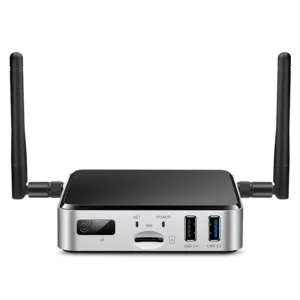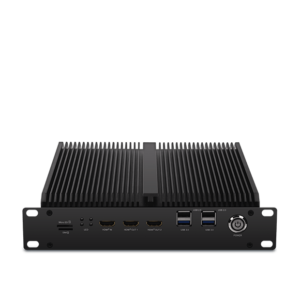Unlocking the Power of AI on Side Devices
Unlocking the Power of AI on Side Devices
Blog Article
AI on Edge Units vs. Cloud AI: Pros and Cons
Real-World Applications of AI on Edge Devices
Synthetic intelligence (AI) is no further confined to the realm of large, centralized data centers. As a result of breakthroughs in technology, side products now play an integral position in deploying AI right wherever information is generated. But what does AI on side devices suggest, and how come it making this kind of hype? Here, we'll investigate how embedded edge ai runs in real life through side devices and learn their wide selection of realistic applications.

What is AI on Edge Products?
AI on side products identifies deploying artificial intelligence formulas entirely on products like smartphones, cameras, drones, or IoT sensors. These units do not require usage of centralized machines for processing data; as an alternative, they conduct evaluation and choices locally, creating the process quicker, more efficient, and usually more secure.
The "edge" here simply identifies processing performed near to or at the foundation of knowledge technology, rather than depending on the cloud. That shift is pushed by the demands for real-time knowledge control and the necessity to decrease latency, enhance privacy, and minimize bandwidth usage.
Key Real-World Purposes of Side AI
1. Wise Security
AI-powered cameras equipped with skin acceptance, activity detection, and anomaly detection are transforming security systems. Side products in this domain can analyze video streams in real-time to spot dubious activities, remove fake alerts, and enhance community safety. As an example, AI methods can discover uncommon actions and attentive authorities straight away without the need to deliver video information to a main host for analysis.
2. Healthcare Checking
Wearable devices and lightweight medical gear are leveraging m.2 ai accelerator for managing wellness information more efficiently. Edge-based AI in products like wellness trackers and smartwatches watches users' vitals, such as heartrate, air levels, or body stress, in real-time. These systems analyze information locally and give immediate feedback, paving just how for faster treatment throughout emergencies.
Beyond wearables, advanced medical imaging units designed with on-device AI may discover signals of diseases like cancer, permitting earlier in the day diagnoses even in rural parts without net connectivity.
3. Autonomous Vehicles
Self-driving vehicles are among the absolute most well-known samples of edge AI in action. With devices, cameras, and LiDAR techniques serving as knowledge options, AI computations get position onboard these vehicles to make split-second decisions. From finding pedestrians and limitations to moving city streets, side AI ensures that the vehicle works easily and efficiently. The real-time control convenience of side products removes the dependence on high-latency cloud methods, ensuring protection in life-critical scenarios.
4. Retail Analytics
Edge devices in retail settings are helping corporations analyze consumer behavior. Smart cabinets and AI-equipped cameras may find customer tastes, check catalog, and actually customize in-store activities in actual time. The info produced from they helps stores make informed choices, improve customer care, and improve inventory management.

5. Industrial IoT
Factories and industrial crops are adopting side AI to revolutionize their checking and automation processes. AI-powered detectors on equipment find potential errors long before they result in expensive failures. Predictive preservation driven by side AI decreases downtime, increases output, and guarantees security on the manufacturing floor.
6. Personalized Activities in Customer Units
Your smartphone is a perfect exemplory instance of how edge AI personalizes consumer experiences. Functions such as for example voice personnel, flexible camera adjustments, and on-device language translation use real-time AI to respond to user needs without sending sensitive data to additional servers. That fosters both comfort and privacy for the end user.
The Growing Influence of Side AI
The usage of AI on edge units continues to surge, driven by industries' increasing need for low-latency, real-time computing, and higher knowledge privacy. Its programs are reshaping industries including healthcare and automotive to public safety and retail. By placing AI's power closer to wherever knowledge is developed, side devices are not only increasing effectiveness but also demonstrating the limitless potential of creativity in the current attached world. Report this page